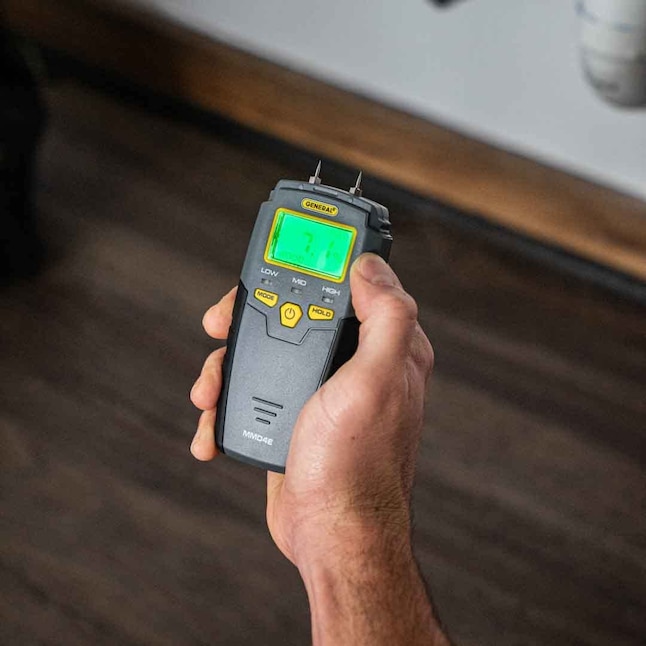How a Moisture Meter Can Boost Your Building And Construction Projects and Protect Against Damage
How a Moisture Meter Can Boost Your Building And Construction Projects and Protect Against Damage
Blog Article
Look Into the World of Moisture Meters: Everything You Need to Know
In the world of moisture meters lies a world of precision and functionality that frequently goes unnoticed. Comprehending just how moisture meters operate, the different kinds offered, and their varied usages can drop light on their relevance in guaranteeing quality and efficiency.
How Moisture Meters Work
Moisture meters operate by measuring the electric conductivity or capacitance of materials to figure out the wetness web content existing. These meters are vital devices throughout numerous markets, including woodworking, construction, and farming. By using different techniques such as pin-type or pinless innovation, wetness meters give exact analyses that assist professionals make informed choices.
Pin-type wetness meters function by placing the sharp pins right into the material being checked. The electric conductivity between the pins is then determined, with greater moisture degrees bring about raised conductivity. Moisture Meter. On the other hand, pinless dampness meters use electro-magnetic signals to check a bigger location without triggering any kind of damages to the material's surface area. These meters are optimal for rapidly analyzing dampness degrees in huge areas or completed items.
Despite the method utilized, wetness meters play an important duty in protecting against concerns such as mold growth, structural damage, or item flaws brought on by excess dampness. Recognizing just how these meters job is necessary for making certain the top quality and integrity of products in various applications.
Kinds of Moisture Meters
Offered the vital duty wetness meters play in various sectors, it is crucial to recognize the various types available to specialists for precisely analyzing moisture levels - Moisture Meter. There are mainly two primary sorts of wetness meters: pin-type and pinless wetness meters

On the various other hand, pinless moisture meters make use of electromagnetic sensing unit plates to check a larger location of the material without triggering any kind of damages. This type appropriates for promptly scanning big locations and is frequently used for floor covering, wall surfaces, and ceilings. Pinless meters are practical for taking analyses on finished surfaces without leaving any visible marks.
Both sorts of moisture meters have their benefits and are picked based on the particular needs of the task at hand. Recognizing the differences between these types is important for specialists to make precise moisture evaluations.
Applications Across Industries
Construction professionals depend on wetness meters to examine the moisture levels in structure products like drywall, timber, and concrete, which is critical for maintaining architectural honesty and protecting against problems like rot or mold from this source and mildew. The floor covering market uses moisture meters to measure the dampness web content in subfloors before mounting numerous flooring treatments, stopping costly damages due to excess dampness. In the food industry, dampness meters are used to monitor and manage moisture degrees in items such as grains, nuts, and dried fruits to keep quality and quality.
Tips for Making Use Of Dampness Meters
Use the dampness meter's calibration setups to guarantee precise analyses when gauging the moisture content in numerous materials. Furthermore, make certain the meter is set to the proper wetness range for the material you are gauging to obtain the most precise outcomes.
When utilizing a pin-type wetness meter, put the pins to the appropriate deepness suggested for the material being checked. This guarantees that the wetness readings are taken from the proper depth within the material, supplying a more precise depiction of its wetness web content. For pinless dampness meters, bear in mind to preserve correct call with the material's surface to get reputable readings.
Routinely check and change the batteries in your dampness meter to avoid unreliable readings due to reduced power. When not in use to extend its life expectancy and preserve its precision, Store the meter in a completely dry and risk-free area. By complying with these ideas, you can make best use of the efficiency of your dampness meter and obtain exact moisture web content measurements across different materials.
Maintenance and Calibration
To guarantee the accuracy of moisture material dimensions, regular upkeep and calibration of the dampness meter are necessary action in its appropriate functioning. Upkeep includes maintaining the moisture meter free and clean from particles you could try these out that could impact its analyses. It is important to comply with the maker's standards for cleaning to stop damages to the device. In addition, routine calibration is required to verify the accuracy of the analyses. Calibration adjusts the wetness meter to guarantee that it offers trustworthy and regular outcomes.
Calibration must be carried out regularly, particularly if the moisture meter is utilized frequently or in essential applications where exact measurements are required. Lots of dampness meters feature calibration devices or can be adjusted by expert services. Moisture Meter. It is suggested to maintain a log of calibration dates and results to track the efficiency of the moisture meter gradually. By calibrating the wetness and maintaining meter consistently, users can trust the accuracy of the dampness material dimensions acquired.
Verdict

Finally, dampness meters play an important role in different sectors by precisely measuring the wetness web content of materials. Recognizing how these devices function, the different kinds offered, and appropriate upkeep and calibration are crucial for acquiring trustworthy results. Whether in manufacturing, construction, or agriculture, using moisture meters visit helps guarantee quality assurance and performance in processes.

In conclusion, wetness meters play a vital function in different sectors by precisely gauging the moisture web content of materials.
Report this page